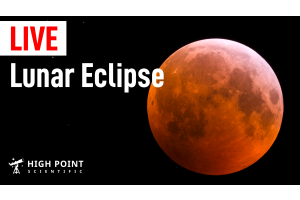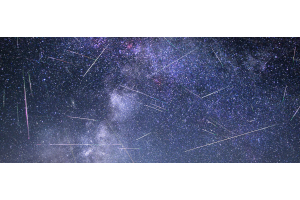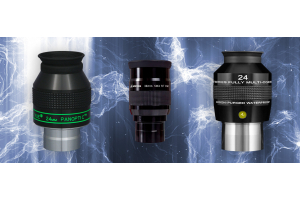
A total lunar eclipse is an unmissable celestial event that can seem like magic, even in today’s scientific world. Astronomers worldwide have studied eclipses for thousands of years, and as a result, there’s little we don’t know about the phenomena. However, there are still many misconceptions when it comes to lunar eclipses.
Will the Moon actually turn red? Can I look at the Moon during the eclipse? For an experienced amateur astronomer, the answer to these questions may seem obvious, but for a complete beginner, these misunderstandings can set the wrong expectations. In this article, we’ll go over some basic facts about lunar eclipses and clear up some of the most common misconceptions.
How Does A Lunar Eclipse Happen?
A lunar eclipse occurs when the Sun, Earth, and Moon align so that the Moon passes through the Earth’s shadow. During a total lunar eclipse, the entire Moon falls within the darkest part of Earth’s shadow, called the umbra, and when this happens, it turns a coppery-reddish hue. This is why lunar eclipses are sometimes called “Blood Moons.”
You may think that a lunar eclipse should occur every month when the Moon is full; however, because the Moon’s orbit is inclined five degrees from the ecliptic (the path the planets take around the Sun), it typically passes above or below the shadow instead. At most, a total lunar eclipse will only happen twice in a calendar year.

Image Source: TimeAndDate.com
Misconception #1: The “Blood” Moon
You might hear a lunar eclipse referred to as a “blood” moon. Sounds scary, doesn’t it? Well, as it turns out, the Moon doesn’t actually turn red, but orange or brownish instead. If you see pictures of a deep-red moon online, the chances are they’ve been digitally altered in some way.
The Moon appears orange due to refracted light from the Earth’s atmosphere. The atmosphere scatters the light from the blue end of the spectrum but allows the longer wavelengths of orange and red to pass through. This light then causes the Moon to glow with an orange hue.
The depth of the color during an eclipse really depends on whatever pollutants are in the atmosphere at the time. These pollutants can block or even discolor the light, causing the Moon to appear darker. In fact, from space, the Moon will completely disappear due to the lack of any atmosphere that affects observations from Earth.
Like the “Super Moon,” the term “Blood Moon” didn’t actually relate to anything astronomical until the media popularized the term.
Misconception #2: Lunar Eclipses are Harmful
This might seem silly to some, but many get a lunar and solar eclipse confused. Looking directly at the Sun - even for just a few seconds - can damage your eyesight and can even cause permanent blindness. That being the case, the partial phase of a solar eclipse, right up until the moment of totality, can be harmful to look at.
However, since the light of the Moon is significantly dimmer than the light of the Sun, looking at the Moon in the middle of the night is always safe, whether it be eclipsed or otherwise.
While the light of the full Moon can be dazzling, there are no permanent side effects, but observing the Moon through a telescope can be a little uncomfortable for your eyes. In that case, we recommend a Moon filter like our Apertura 1.25” Moon Filter.
Otherwise, if you’re going outside to observe a lunar eclipse, you’re safe to leave your solar eclipse glasses behind - unless, of course, you’re looking to make a unique fashion statement.

Misconception #3: Lunar Eclipses are Rare
Lunar eclipses don’t happen every month, but they’re not exactly rare either, with eclipses tending to come in seasons. Eclipses happen when the Earth and the Moon are aligned with the Sun, and this alignment usually happens twice a year - this is the eclipse season. A season usually lasts a month or two, with a maximum of three eclipses (both solar and lunar) occurring during this time. These seasons occur roughly every six months, and you can check out timeanddate.com for a list of upcoming eclipses.
However, the Sun, Earth, and Moon aren’t always precisely aligned during an eclipse cycle, and as a result, there may only be partial or penumbral eclipses. In fact, the reality is that you may have several total lunar eclipses occur during several seasons within a 12 to 18-month period but then only partial or penumbral eclipses for the next few years.
Misconception #4: Lunar Eclipses are Hard to Photograph
To some extent, this may actually be true, but only if you have the wrong equipment. For example, if you were to simply point your smartphone at the sky, all you might capture is a disappointing orange smudge in your image.
To properly capture a lunar eclipse, you’ll need better equipment, and we strongly recommend using a DSLR for the best possible photos. A telescope or a camera lens with a focal length of 400-800mm is ideal for photographing the eclipse, but you may also get away with attaching your smartphone to your telescope as well.
If you’re going to use a smartphone, we recommend using the Celestron NexYZ Universal 3-Axis Smartphone Adapter to securely align your smartphone’s camera with your telescope eyepiece. Your smartphone should automatically adjust the shutter speed to get good photos of the Moon during the partial phase of the eclipse.
(Check out our guide for more great tips on how to photograph a lunar eclipse!)

There’s a lot of misinformation about lunar eclipses, and it can be hard to differentiate fact from fiction. We hope you now have a better understanding of what to expect the next time you observe an eclipse! Did you know about these common lunar eclipse misconceptions? Which one surprised you the most?

Learn More
Interested in learning more about nebulae, galaxies, planets, and more? Not sure where to begin? Check out our Astronomy Hub!
This Article was Originally Published on 11/03/2022








